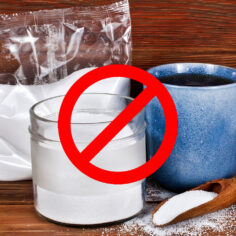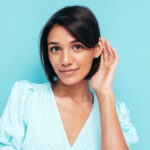Have you decided to hop on the sugar free diet? Great! Whether you choose to avoid added sugar completely or gradually reduce your sugar intake, grocery shopping is going to look different. Reading labels can help you find the sneaky hidden sugars and remove common (and unknown) sources of sugar from your diet!
Taking the Decision to take Sugar Free Foods
According to studies by the National Institute of Health, the average Indian consumes around 18g of added sugar in a day. This is on top of all the sugar they could consume naturally, such as fruit or grains.
Excessive sugar consumption is linked to the following health problems:
- Obesity and weight problems
- Diabetes (especially Type 2 Diabetes)
- Heart diseases and cardiovascular problems
- Inflammation (which leads to a bunch of further health problems such as acne)
- High cholesterol
- High blood pressure
If you actively shop for sugar free foods for your diet, your risk of contracting these health problems will definitely decrease. Keeping this in mind can help you prepare a sugar free diet plan.
This article will give you tips on how to get started, look for sugar free foods you can try, sweet substitutes for all your favourite snacks, cravings and processed foods, and more!
Suggested Read: The Truth Behind Artificial Sweeteners
Grocery Shopping for a No Sugar Diet
Picture this – you’ve entered the grocery store and your hands are feet are automatically taking you to the aisles where you can find your favourite snacks, and you might add them to your cart without even thinking about the nutritional value. No, let’s not do that!
The first step starts with gradually picking up the thing you want to buy, reading the label and seeing the sugar content. Think of the first few weeks as a period of eating lower sugar, rather than a no sugar diet. You will then train your taste buds and palate to accept a less sugary lifestyle.
During this time, you can depend on foods with natural sugar, like fruit, because they are packed with nutrients and fibre. As you understand more about sugar free foods, make small changes in your diet to reflect your new knowledge.
First Two Weeks – Less Sugar
- Put less sweetener and sugar in your coffee, tea or breakfast cereal
- Swap out your sodas for flavoured carbonated water or infuse your water with fruit to give it a taste
- Do not eat too much dried fruits (like raisins or figs) because it contains a bit of sugar on top of it. Replace your dried fruit intake with more fresh berries
- Switch out your pastas and breads to whole wheat to reduce the sugar content.
You might have sugar withdrawals during this period. You might feel cranky as well. The important thing is, please do not go too fast! Make room for the cravings and get through the first two weeks.
First Three Weeks – Cut the Very Obvious Sources
It all begins with cutting out the very obvious sources of direct sugar.
These include:
- Pastries like cakes, muffins, tarts, biscuits
- Frozen treats like ice cream, sorbet
- Indian sweets (mithai) and chocolates
Some foods with naturally occuring sugars are actually healthy for your diet. However, as you go on with the sugar free diet, then it will train your brain to have fewer cravings. Cut out dried fruits, milk and yoghurt from your diet.
Start Reading Food Labels Consistently to be Sugar Free
Aside from the very obvious sources, there are fewer truly sugar free foods than you think! Many, many supermarket foods actually have sneaky and hidden sugars that you will need to find yourself. For that, you need to begin reading all labels closely and become proficient!
There are hidden sugars in:
- Packets of instant noodles
- Grains like bread, rice and pasta
- baked beans
- Tacos
- Sushi (in the soy sauce)
Once you have cut out the obvious sources of sugar and the secondary sources, you can start eliminating hidden sugars from the list as well. The simplest way is to read the nutritional information and ingredients list.
Keep the following things in mind:
- Sugar is measured in grams on the label. Four grams of sugar is the equivalent of one teaspoon
- Some foods, like fruits, do not come with an ingredients label. This means that you’ll have to look up the information online about its nutrition profile
There are apps that can help you learn about the nutritional information of foods in grocery shops. Or you can also book an appointment with OZiva’s expert product advisors, who can guide you on how to shop for sugar free foods!
Sugar Has Many Code Names
Sugar has many aliases and you’ll need to know all their names to be able to completely remove it from your diet!
The general rule? Look out for ingredients that end in “ose” – it means that they are an alternate form of sugar!
Avoid – sucrose, maltrose, glucose, dextrose, lactose and fructose. There are also other forms of sugar such as malt sugar. But sugary substances also take on forms like:
- Agave
- Molasses syrup
- Corn syrup
- Maltodextrin
- Fruit juice concentrate
Don’t worry about remembering all of them at once, as you keep going shopping for sugar free foods, you’ll learn to identify them all!
Avoid Artificial Sweeteners As Well – It’s not Sugar Free
You might think that if you go on a sugar free diet, artificial sweeteners make for a less daunting substitute. Well the truth is that artificial sweeteners can contain anywhere from 200 to 13000 times more sugar than actual sugar. This can trick your brain into thinking you are eating sugar.
They can trigger sugar cravings and instantly break your sugar free diet – so avoid them!
- Stevia
- Equal
- Splenda
These are usually used for cooking or baking, but some processed foods also use them as ingredients. Look out for the following on any labels:
- Asparatame
- Sucralose
- Saccharin
You’ll find these in products sold as “low-calorie”, “no-sugar” – make sure not to trust the front of pack, flip it over and read the ingredients list!
Suggested Read – Sugar vs. Sucralose vs. Stevia
It’s Also Present in Juices – Look Out!
Don’t think that a sugar free diet means you can get sugar through juices. Here are a list of liquids that contain a lot of sugar
- Carbonated water
- hot chocolate
- tea and coffee
- tonic water
- flavoured milk
- cocktails
- wine (contains natural sugar from grapes)
Most foods and drinks come in unsweetened and sweetened versions. We suggest that you opt for the unsweetened version!
If you want to add protein to your diet, many of them contain artificial sweeteners and added sugar, ruling them out as sugar free foods. You can try OZiva Protein & Herbs for Men and OZiva Protein & Herbs for Women. They contain zero added sugar or artificial sweeteners!
Last modified: October 11, 2023




